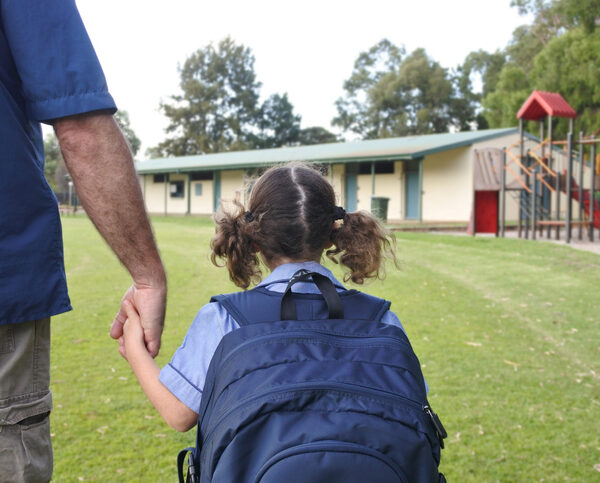Transitions can be tough for children – here are some ways to support

Many children struggle with transitions, whether it’s separating from parents at drop off, moving from one activity to another, or moving rooms.
The start of a new calendar year is often a time of transition for many children, and challenges with anger, anxiety, or simply being overwhelmed with all of the “new” are common.
In the piece below, we share some advice about how to support children around transitions and support them along the way.
Common problems with transitions
Children will often display challenging behaviours during transitions, which educators often respond to by taking a more authoritative approach, which can have a further impact on the behaviour – it’s often a vicious circle.
When transitions happen too quickly, or without warning, families can also feel unsettled, which leaves them with less space to support their children.
This may look like a family being informed that their child is moving up to the next age group in the next few days, leaving them with worries about how their child will separate from familiar educators, how their child will cope with a new physical environment, or even how they will cope with being surrounded by older children.
Making families aware of transition moments, wherever possible, can allow them space to be more supportive and encouraging for their children, which can lessen behaviours.
Educators, too, can acknowledge that transitions are challenging, and take a compassionate response to learning more about what communication is behind the challenging behaviour – is this a child trying to communicate that they are anxious or unsettled, but who doesn’t have the language or insight to do so?
Make changes slowly, and signal them
Children should be introduced to change slowly. If you’re planning on resetting the room environment, for example, it can be helpful to signal those changes with a discussion: “Next week, when you come back to the Starbeam room, things will be in a different place. We are making space for….”
It can also be helpful to show children visual images of new equipment or resources coming into the space, and to get their input about how this might be used.
If children will be working with new educators, it’s good to give them as much notice as possible, and to let them know they might see new faces in the room, and why. For example: “Annie is going to be having her baby soon, and when she’s at home looking after the baby, Sam is going to be helping in our room. When Annie and her baby are ready, they are going to come in for a visit so you can see her again.”
Even smaller transitions during the day can be signalled to help children know what is happening next, what to expect, and to help them think about how they might manage in the next space. For example “When you wake up from your nap, we are going to go outside. There’s water play and trucks outside.”
Practical strategies to support with transitions
There are many different strategies that educators can take to help children with transitions. These include, (but aren’t limited to):
- Having a visual schedule showing the main elements of the day
- Using a first/next/then approach (first we are going to change your nappy, then we are going to have something to eat, and then we will be going outside)
- Using songs to signal changes or expectations
- Having the children help one another to prepare for the next element – for example, the children might work in pairs to pack up equipment, or to give out hats to other children
For more advice and support, see Plan Effective Transitions for Children and Transitions: Moving In, Moving Up and Moving on from ACECQA.
Popular

Quality
Practice
Provider
Research
Workforce
Honouring the quiet magic of early childhood
2025-07-11 09:15:00
by Fiona Alston

Practice
Provider
Quality
Research
Workforce
New activity booklet supports everyday conversations to keep children safe
2025-07-10 09:00:16
by Fiona Alston

Quality
Practice
Provider
Workforce
Reclaiming Joy: Why connection, curiosity and care still matter in early childhood education
2025-07-09 10:00:07
by Fiona Alston












